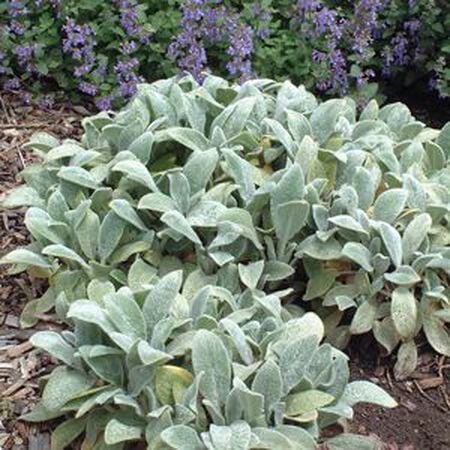Lamb's Ear, Stachy Seeds
Key Attributes
Key Attributes
Product Details
Weight
0.01Depth
0.12Height
4.5Width
3.25Plant Height
12-18"Botanical Name
Stachys byzantinaSeed Type
SeedAdditional Characteristics
Deer Resistant, Ground CoverPacket
25 SeedsSow Depth
1/8"Breed
Open-pollinatedSun
Full SunLife Cycle
PerennialSow Method
TransplantCategories
FlowersDays To Maturity (# Days)
115Components
Growing Instructions
![]() Learning Download: How to Grow Stachy
Learning Download: How to Grow Stachy
Stachy are also known as Lamb’s Ears, and they are a very popular, soft plant to use as groundcover. These plants can grow up to a foot long, and although they do occasionally produce flowers, they are mostly used for the appearance of their leaves. The leaves feel fuzzy and velvety, like a lamb’s ear.
Before Planting: Plant Lamb’s Ear seeds inside in the late winter, which is typically eight to 10 weeks before the last frost in your area. Press the seeds lightly into the soil, but do not cover them because they require light to germinate. Keep the seeds moist until they germinate, which should be within 35 days.
Planting: When spring arrives, transplant the seedlings outside and pinch them back to stimulate growth. Space the seedlings about 16 inches apart.
Watering: These plants are drought tolerant, and be sure you don’t overhead water, as this will possibly rot the leaves.
Fertilizer: Since Stachy spreads easily, fertilizer is not needed to help grow this plant. Instead, mulch around the base of the plant and provide a layer of compost each spring.
Days to Maturity: Stachy will bloom in the spring to late summer.
Harvesting: As they are typically used as groundcover, these plants are not ones you would harvest.
Tips: A way to keep the plant from self-seeding is to remove the flower stalks before they go to seed.
Shipping Schedule
Our Seed Promise
 "Agriculture and seeds" provide the basis upon which our lives depend. We must protect this foundation as a safe and genetically stable source for future generations. For the benefit of all farmers, gardeners and consumers who want an alternative, we pledge that we do not knowingly buy or sell genetically engineered seeds or plants.
"Agriculture and seeds" provide the basis upon which our lives depend. We must protect this foundation as a safe and genetically stable source for future generations. For the benefit of all farmers, gardeners and consumers who want an alternative, we pledge that we do not knowingly buy or sell genetically engineered seeds or plants.
The mechanical transfer of genetic material outside of natural reproductive methods and between genera, families or kingdoms, poses great biological risks as well as economic, political, and cultural threats. We feel that genetically engineered varieties have been insufficiently tested prior to public release. More research and testing is necessary to further assess the potential risks of genetically engineered seeds. Further, we wish to support agricultural progress that leads to healthier soils, to genetically diverse agricultural ecosystems, and ultimately to healthy people and communities.
To learn more about the "Safe Seed Pledge" please visit www.councilforresponsiblegenetics.org.

